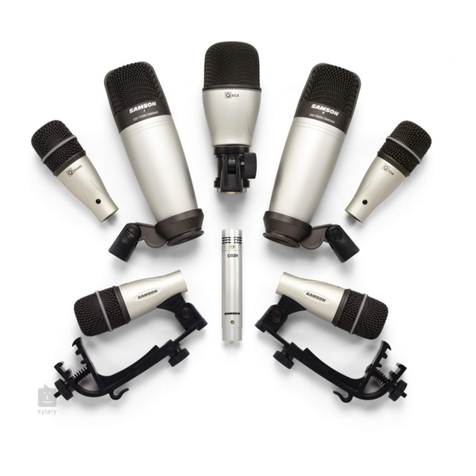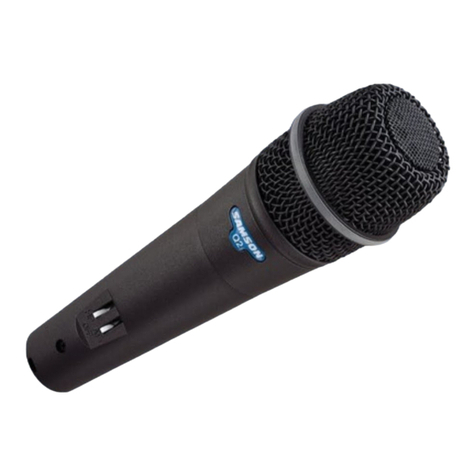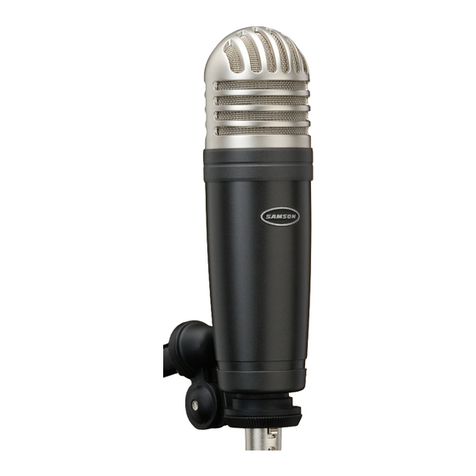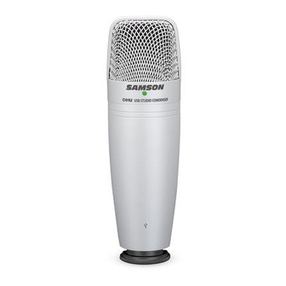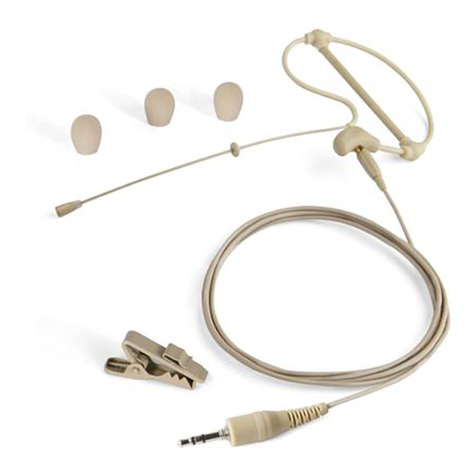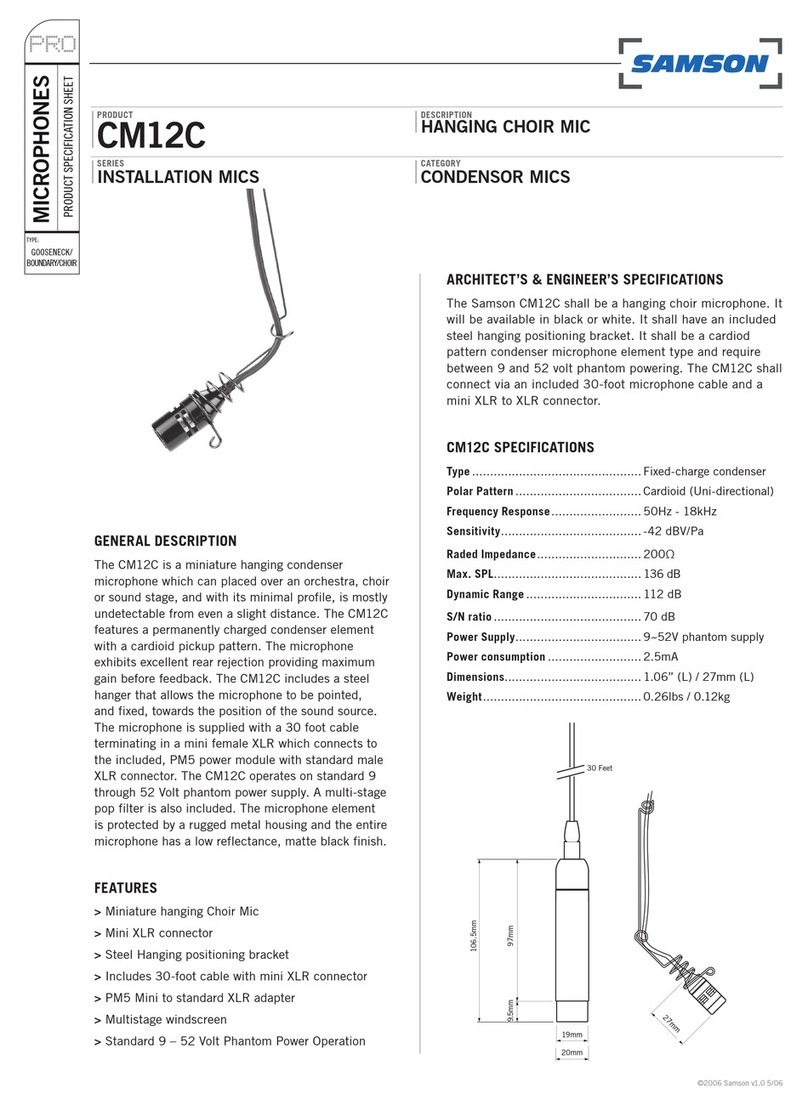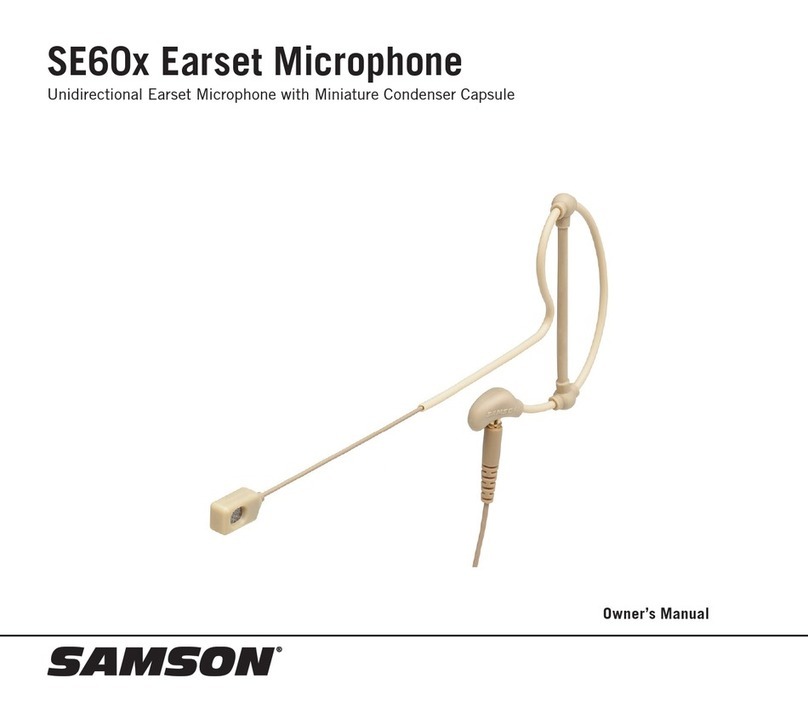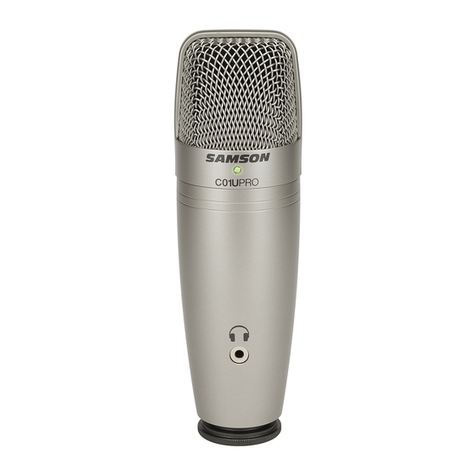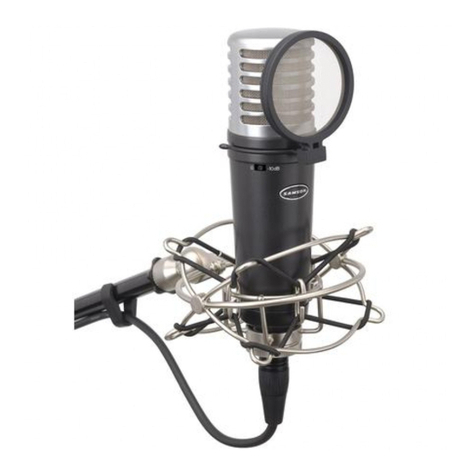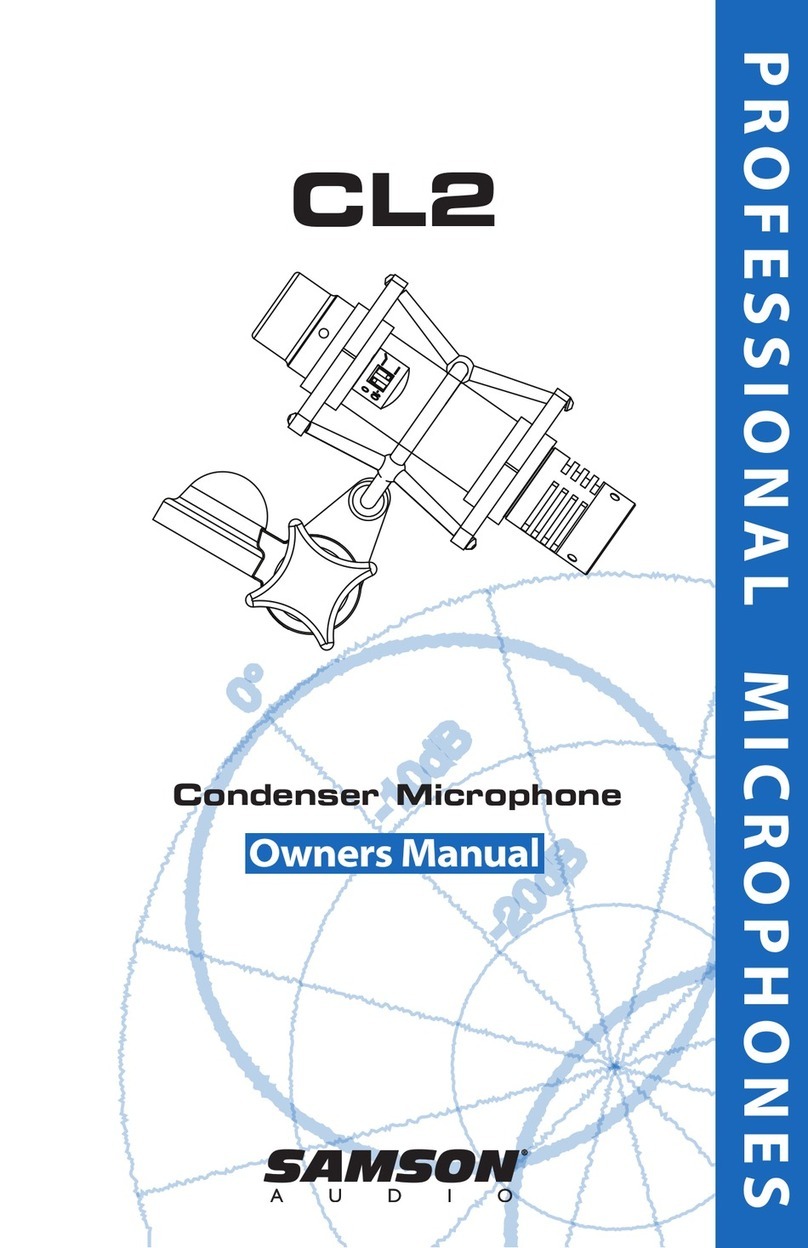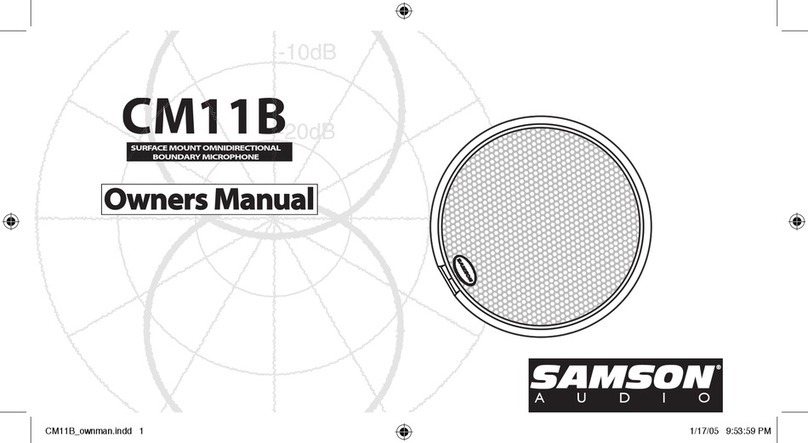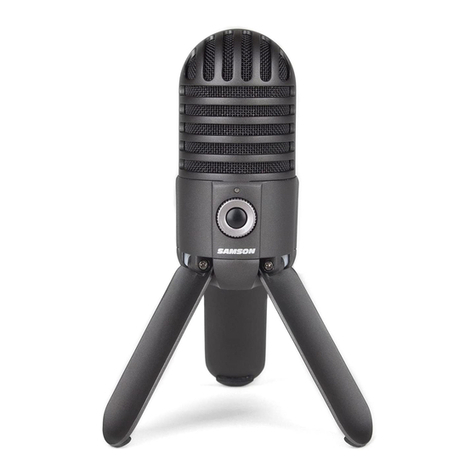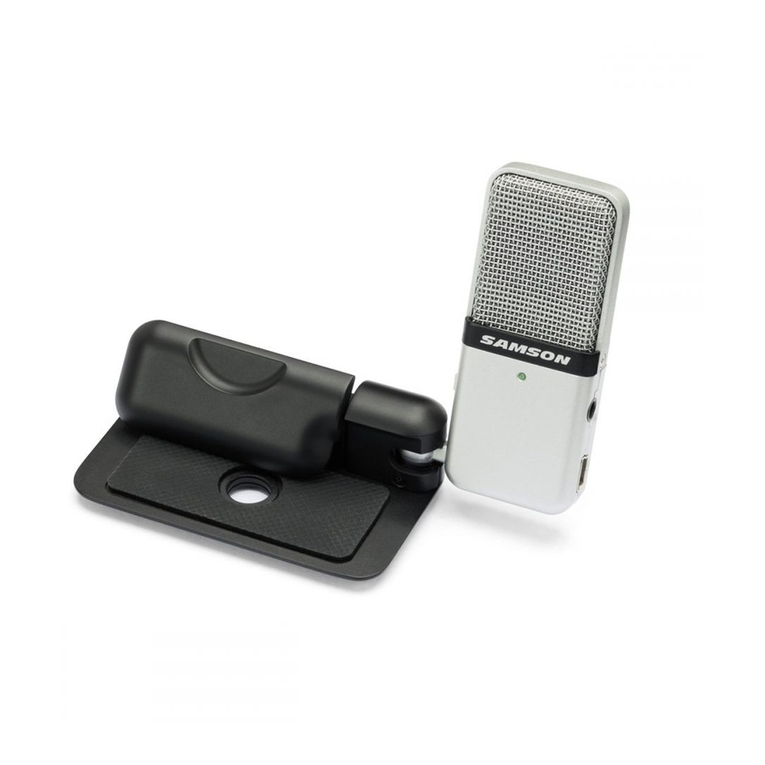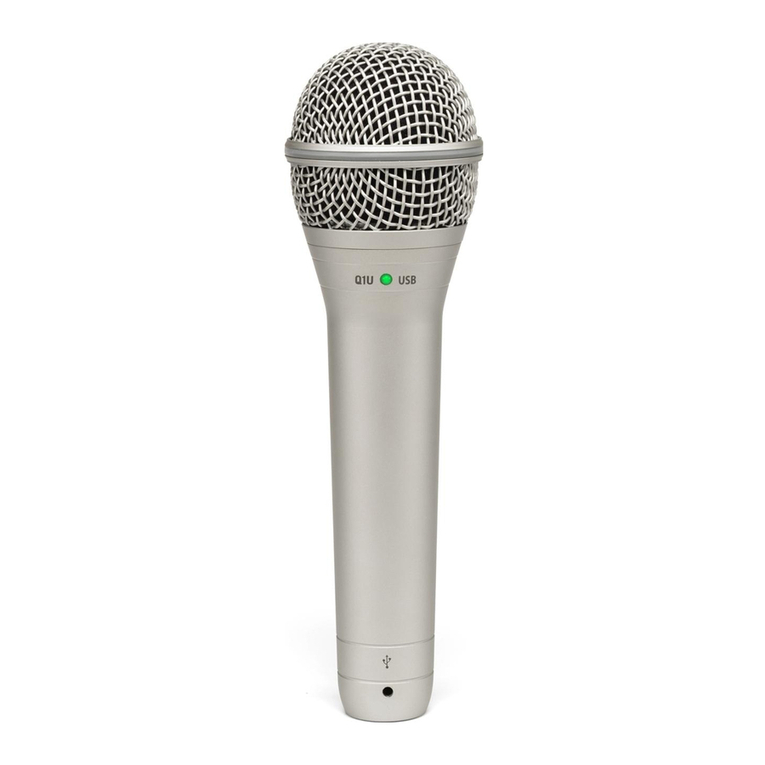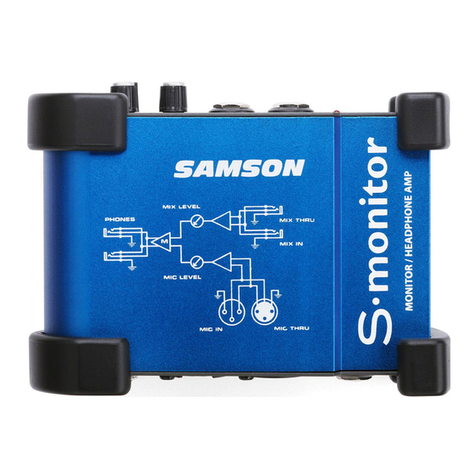4
Q2 / Q3 Features
The Samson Q2 and Q3 microphones utilize state-of-the-art
microphone technology and are engineered to the finest detail.
Here are some of their main features:
•High energy rare earth Neodymium element delivers high output
and exceptional sound quality.
•Transformerless design enables extended low frequencies and
reduces low frequency distortion.
•Tight polar patterns minimize feedback problems and effectively
reject signals not originating directly in front of the mic capsule.
•Full range frequency response for optimum reproduction of vocals
and instruments with an exceptionally clear, crisp sound.
•Vertical porting that works to remove standing wave distortion.
•Extremely lightweight aluminum humbucking voice coil eliminates
magnetic field interference and provides true hum rejection right at
the source while delivering extended high frequencies.
•Unique triple-plated multi-stage windscreen enables “up-close”
usage and greatly reduces pops, sibilance and onstage noise.
•Special shock-mounting allows multi-axis movement of the mic
element in order to greatly reduce handling noise.
•Rugged zinc-casting, silicon anti-dent ring and gold-plated
XLR connector ensures reliable performance in even the most
demanding environments.
•Switchable 10 dB pad enables use with high sound pressure level
(SPL) signal sources such as drums or amplified instruments.
•Switchable 12 dB / octave high pass filter (HPF) tuned to 80 Hz for
eliminating rumble.
•Lightweight and compact, the Q2 can be mounted on any standard
microphone stand (using the included mic clip) or can be easily
handheld for long periods without inducing fatigue. Equally
compact, the Q3 mounts directly on a mic stand (no clip required)
and rotates mechanically 90°for optimum placement—particularly
handy when miking large drum kits on small stages!
•Included foam-lined carrying case and Euro metric mic stand
adapter.
